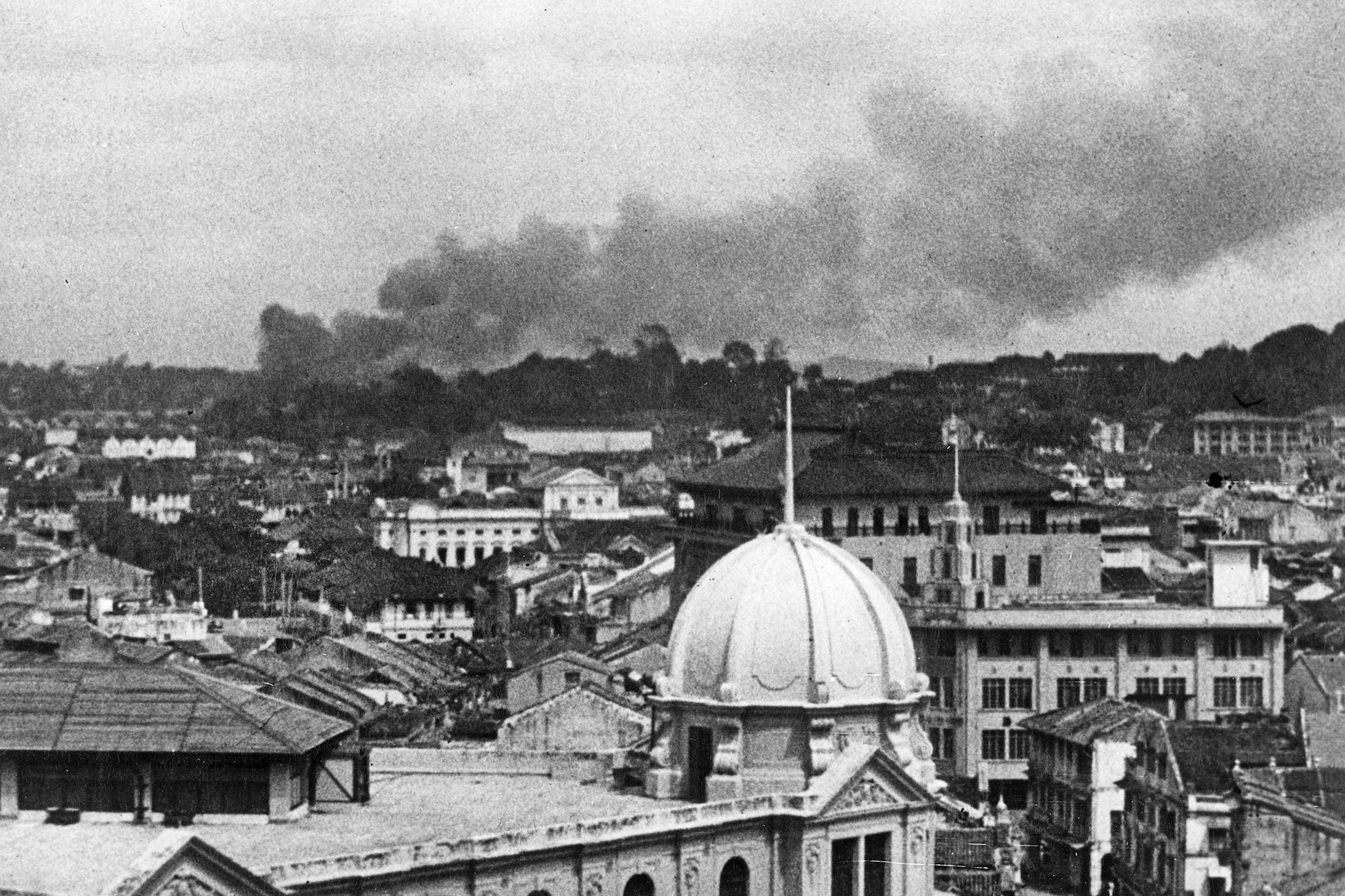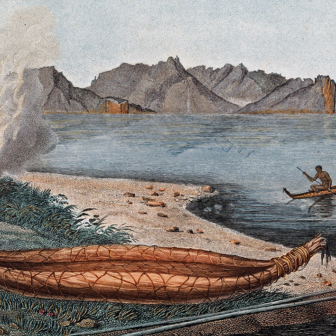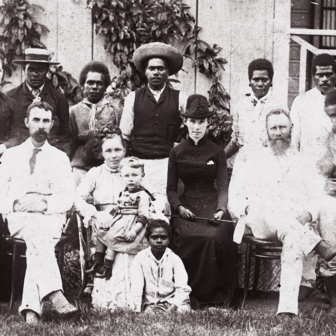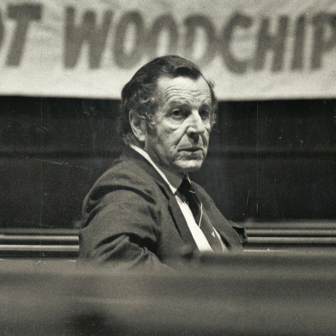The fall of Singapore in February 1942 remains the greatest disaster in Australian military history. The collapse of Britain’s supposedly impenetrable fortress in the Far East sent a division of Australian soldiers into brutal captivity and opened the way for a feared invasion of the Australian continent.
But, as with the retreat from Gallipoli at the end of 1915, ignominious defeat would soon be dressed in the new livery of patriotic pride. The Australians had fought with distinction as the Japanese swept down the Malay Peninsula, their gallantry evident in a series of tenacious engagements that had briefly slowed the inexorable advance. And, as with the Dardanelles campaign, it soon became lore that weak British leadership and inadequate military support was to blame for failure.
The suffering over the following years as more than 18,000 Australian prisoners of war were subjected to the horrors of Changi, the Thai–Burma Railway, Sandakan and countless other slave labour camps — more than 8000 of them dying in captivity — would further reinforce the comforting national belief in the ill-fated but untarnished valour of our troops in Southeast Asia.
That reverently curated mythology was rudely challenged with the release three decades ago of previously secret British wartime records damning the behaviour of Australian troops in the final days before and after the surrender in Singapore. It has now been punctured with the publication of a new book that not only reinforces the British allegations but concludes that the official Australian history of the war, by design or omission, failed to include a truthful accounting of those events.
In June 1942, General Archibald Wavell, the allied commander-in-chief for the Southwest Pacific, sent an incendiary report from his headquarters in Delhi to British prime minister Winston Churchill and the war cabinet. The Australian troops had “gone to pieces,” it claimed: “For the fall of Singapore itself, the Australians are held responsible.”
Based on interviews with about fifty servicemen, officials and civilians, the report alleged there were mass desertions by Australian troops well before the official surrender was declared and that lawless Australian troops had fought with civilians to gain access to boats to flee the island in defiance of final orders to lay down their arms to the Japanese.
The report was released in 1993 by the British government. Two years later, British historian Peter Elphick went further, claiming that more than 8000 Australian troops had deserted — close to half the entire Australian force — and that some of them had been involved in looting, rape and murder. In his book Singapore: The Pregnable Fortress, Elphick claimed the mass desertion of the Australians, as well as by many British and Indian troops, represented “the highest incidence of desertion from any army, anywhere at any time.”
The initial release of the Wavell report drew an indignant response from then Australian prime minister Paul Keating, who said attempts to blame young Australian soldiers for “the British Empire’s most humiliating debacle” were “beyond the bounds of decency and credibility.”
While conceding that the allegations, if true, would bring discredit on the men and their country, and that it was important not to hide from uncomfortable historical truths, Wavell’s report focused on the fact that Singapore’s defences were inadequate and the British government knew it.
“It was certainly not Australian troops, or British troops, but British policy which led to the fall of Singapore,” Keating said. “It is unlikely that the other allegations will ever be satisfactorily tested. But blaming young soldiers for the failures of politicians and generals will not find much support in this or any other country.”
He went on: “Whatever the alleged behaviour of individual soldiers in the last days of Singapore, the fact remains that Australian, British and other Commonwealth troops were placed in an impossible position. Overwhelmingly they served with courage and distinction in appalling circumstances not of their making.”
Peter Elphick conceded that the Allied troops had suffered from poor morale from the start of the campaign that grew steadily worse after the Japanese landed on the northeast coast of Malaya and rapidly advanced down the peninsula towards Singapore. “The lack of air cover, the absence of tanks and the shortage of anti-tank guns meant that by the time Northern Jahore was reached the situation was probably irretrievable unless we could have sent a fleet and more aircraft.”
But Elphick supported Wavell’s claims that the mass Australian desertions made it impossible to avert surrender and force the Japanese into retreat. “Wavell felt that if the island could have held out for six weeks he could have brought in air reinforcements,” he argued. “If the desertions hadn’t been on such a large scale, I believe the garrison would not only have resisted longer but would have been capable, even as late as the final day, of launching a counter attack.”
A controversy that has since subsided into the corridors of academic debate is set to be reignited with the publication of the first biography of the general editor of Australia’s official history of the Second World War — Gavin Long, the highly regarded successor and protege of Australia’s fabled Great War official historian, Charles Bean.
In Great at Heart, published this month, Garry Hills offers a generous and admiring account of the life and work of Long, who achieved distinction as a war correspondent for the Sydney Morning Herald in Europe, North Africa and New Guinea before being selected by the Curtin government, on Bean’s recommendation, to oversee the vast official history project. But he is sharply at odds with the hero of his narrative on the matter of the conduct of Australian soldiers during the fall of Singapore.
Hills writes that many documents that informed Peter Elphick’s conclusions about the magnitude of the desertions and the misconduct of Australian troops were available to but ignored by both the British and Australian official historians in the early 1950s — not to mention the many witnesses to the events who might have been interviewed but were not.
“The question at hand is whether a full and accurate depiction of the shameful episode is evident in the official history,” says Hills. “Clearly it is not.”
When the volume of the history dealing with the fighting in Southeast Asia was first published in 1957, it gave barely a hint of impropriety in the conduct of Australian troops in the dying days of Singapore. “The Japanese Thrust” carried the byline of Lionel Wigmore, a British-born Sydney journalist who had served as a media officer with the Australian forces in Singapore before being evacuated to Java a few days before the island’s capture.
Wigmore’s volume alludes briefly to misconduct before setting off on an elaborate defence of the motives of the men faced with imminent capture by the Japanese and arguing that a fine line distinguished escapers and deserters: “The behaviour of the escapers varied greatly. Some, generally regarded as being among the deserters, including Australians, blackened the reputation of their fellow countrymen and prejudiced the chances of those who followed.”
But the only detail of such reputation-blackening conduct is a single sentence in a footnote that refers to an unnamed Dutch police inspector who had hosted a party of twelve Australian soldiers and “found upon returning from absence on duty that his house had been ransacked and food, bedding and parts of his dress uniform taken.”
Wigmore argues strongly — perhaps in anticipation of future controversy — that the dividing line between desertions and escapes was in some instances indefinite. He points out, not unreasonably, that a report that a ceasefire was to take effect from 4.30pm on 15 February 1942 had gained wide circulation: “Many acted on it in good faith. Some, as the plight of the city worsened, consciously deserted. Once the fighting had ceased, others felt free to get away if they could.”
Garry Hills is scathing about what he describes as Wigmore’s attempts to mitigate the culpability by briefly referring to “odious actions and then immediately offering a psychological rationale” for them: “The reader is presented with a glimpse of the stark facts about the shambles that the Australian soldiers lived through that day, but… remains unenlightened about the extent of the unconscionable behaviour.”
While “The Japanese Thrust” was Wigmore’s work, Garry Hills is unsparing about its implications for Gavin Long’s reputation as general editor of the full history: “Long had such a close and active involvement in the project that he is clearly implicated in any editorial failures.”
Hills notes that in 1956 the Australian chief of staff in Malaya, Colonel Jim Thyer, wrote to Lieutenant General Arthur Percival, the allied commander in Singapore who stayed to embody the humiliation of surrender and spent three and a half years as a Japanese POW (unlike the most famous Australian escaper/deserter, Major General Gordon Bennett, who defied Percival, abandoned his troops and made it home to Australia). Thyer declared that any watering down of the official history did not worry him because “a discerning person” would be able to read between the lines.
“Wavell claimed his report to Churchill was ‘fair and accurate’,” Hills writes. “Is the Australian history fair and accurate?” •




